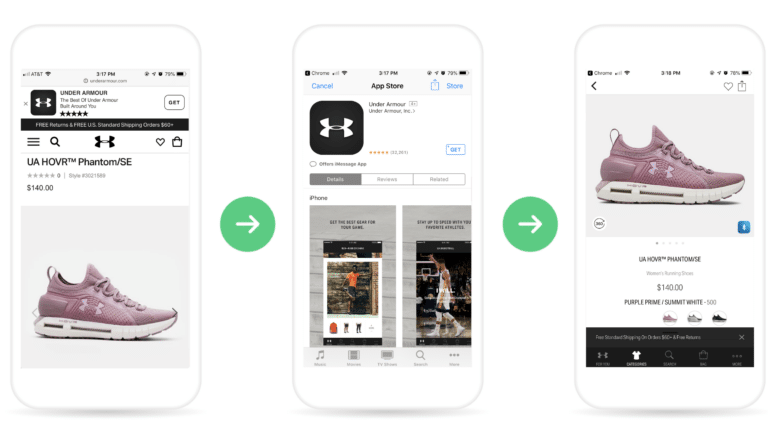Top brands are converting mobile web traffic into high-value mobile app users. Today we’ll share a few pointers on how to turn this effective and cost-efficient strategy into a vital component of your mobile growth success.
Native apps drive 3x more sales than their mobile web counterparts and in-app transactions continue to grow 22% year-over-year. Additionally, time spent in-app is steadily increasing year over year and is predicted to reach a daily average of 2 hours and 43 minutes this year – while time spent on mobile web remains stagnant.
This likely isn’t news, but it begs the question: How can you most effectively route users to native apps from channels like the mobile web, social, and email? And how do you measure those app downloads to measure performance and optimize your acquisition efforts?
Smart banners are a highly effective and cost-efficient way to convert mobile web visitors to app users by deep linking to in-app content from these channels. 50% of brands surveyed for Branch’s Mobile Growth Industry Report responded that routing users to their app from other properties, like their mobile website, is a top priority for mobile user acquisition. And there’s a clear reason why: companies utilizing smart banners have doubled their web-to-app conversion rates.
What are Smart Banners?
As a quick recap, a smart banner is a banner at the top or bottom of the screen that gives users the option to download or open the app from a mobile website. When a user clicks the banner, the smart link will automatically open up the app if it’s already installed or fall back to an App Store page if not.
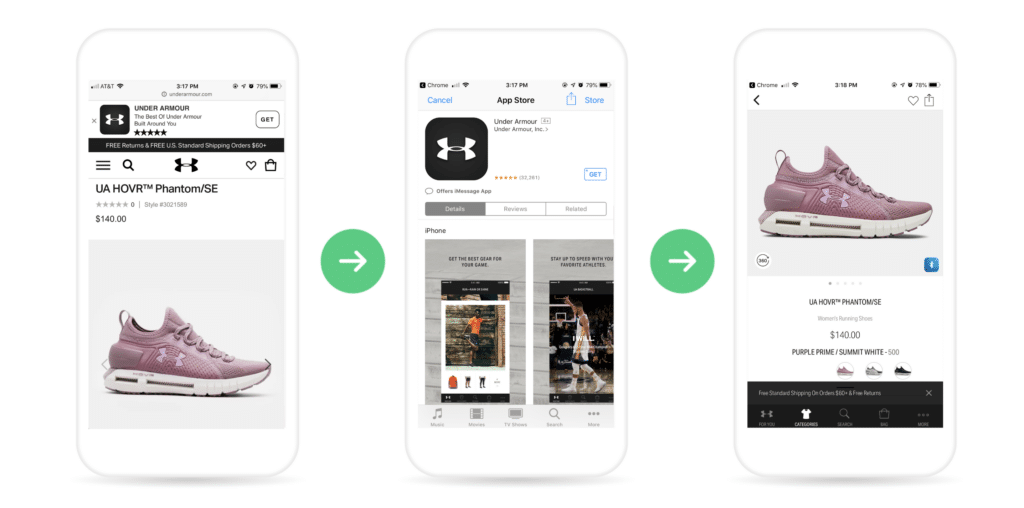
In our last post, How to Make Interstitial Banners Work on Mobile, we covered the implementation process of Branch interstitials and smart banners – and the importance of personalization. Now, we’ll discuss how to measure app downloads using smart banners, specifically, and how to optimize your acquisition strategy.
Note: While this post focuses on smart banners, you can also utilize interstitials – the key difference being that interstitials take up more screen real estate (think of a full screen takeover). Both capture high-intent mobile website users and seamlessly drive them into the native app – where they get a higher quality user experience and are more likely to convert.
How to Use Smart Banners to Drive Mobile Growth
In addition to the value from the higher conversion rate of native apps, smart banners also help optimize acquisition costs by leveraging your website – a highly cost-efficient source of lead generation. Capturing a user on web costs 82% less than driving an app install. By leveraging organic channels to first route users to your website, you can then convert them to app users and significantly lower your overall app user acquisition costs.
Once you’ve implemented smart banners, it’s time to measure the downloads and conversions your banners are generating to quantify the value they bring to your mobile growth strategy, improve the validity of your attribution data, and optimize your smart banner campaign performance.
How to Track App Downloads Using Smart Banners
The historical approach to attributing app downloads is through basic probabilistic modeling. The challenge with this technique is that it relies on the timespan from click-to-install – and is only efficient when this timespan is relatively short. If time elapses between the banner click and the app download, the banner that generated the app install will not be given credit, since the user’s app install will be separated from the pre-install banner click.
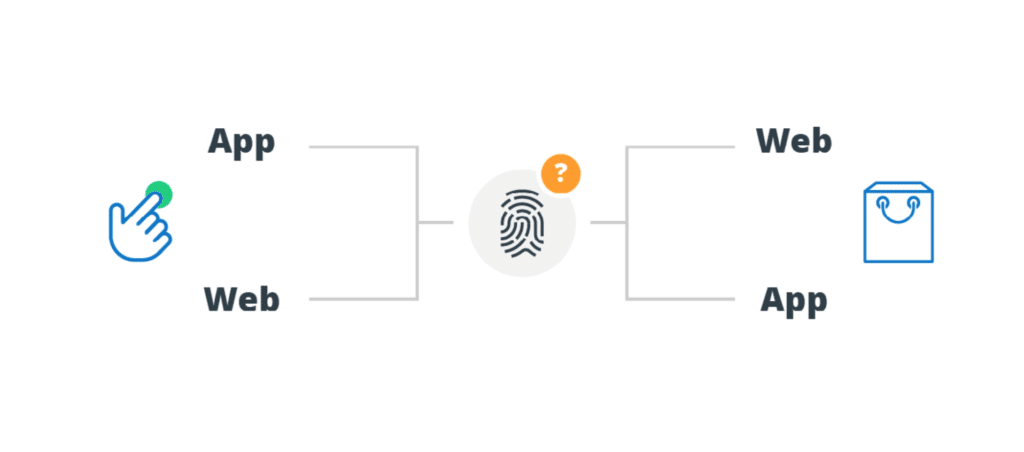
One example of when the click-to-install time could be long enough for basic probabilistic modeling to not attribute the two actions to the same user: In areas of less stable phone service and web connectivity, causing the install process to take longer.
Also, say two users rely on the same network or connection to engage with the same device model and operating system. A basic probabilistic modeling approach to attribution will unify the behavior of these users as one single user, leading to a phenomenon known as false attribution.
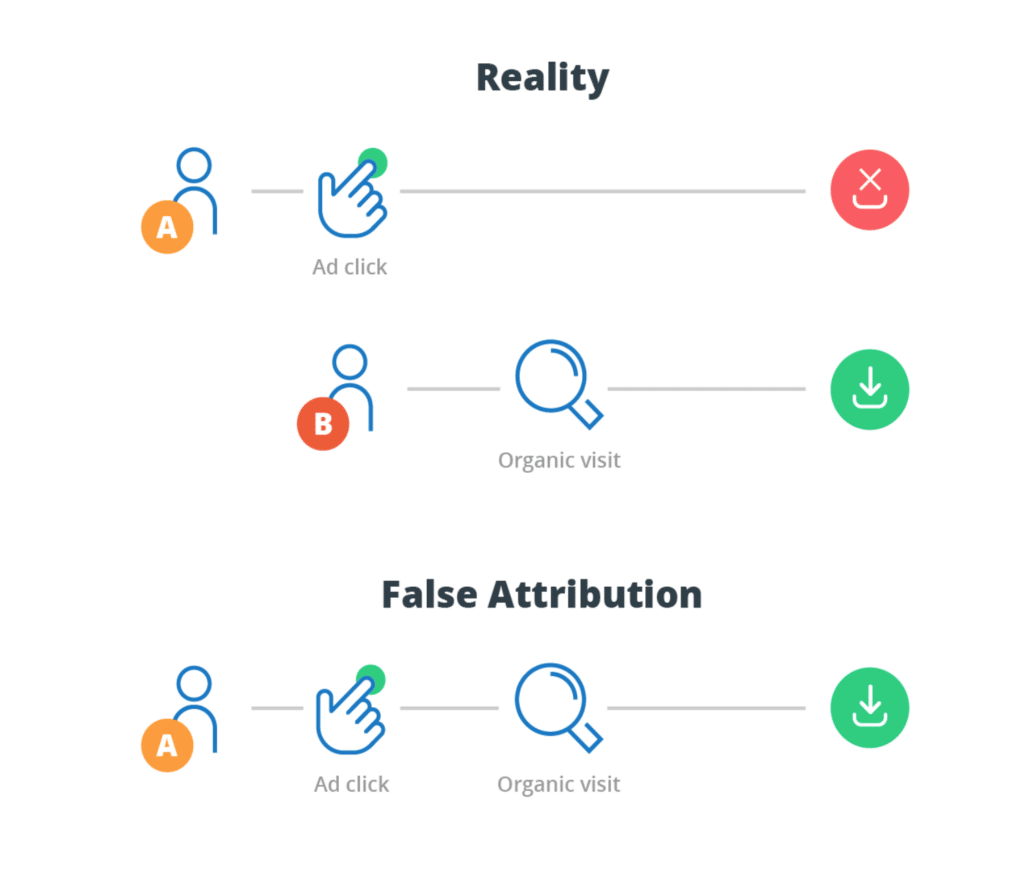
30-40% of app installs are falsely attributed with basic probabilistic modeling (if you’re on shared wifi or a busy cell tower, the error rate can be over 50%).
Branch’s Attribution Solution
While basic probabilistic modeling relies on impersonal signals, Branch’s attribution solution uses signals unique to each mobile user to measure user behavior across channels and platforms.
This vast, global network, called the Branch link graph, merges cookies on the web with IDFAs and GAIDs inside apps. These cross-platform link graphs are reliable, permanent, and do not require basic probabilistic modeling. Branch’s solution for attribution allows marketers to unify and deduplicate users that interact with their brands across mobile web, native apps, social channels, email, etc.
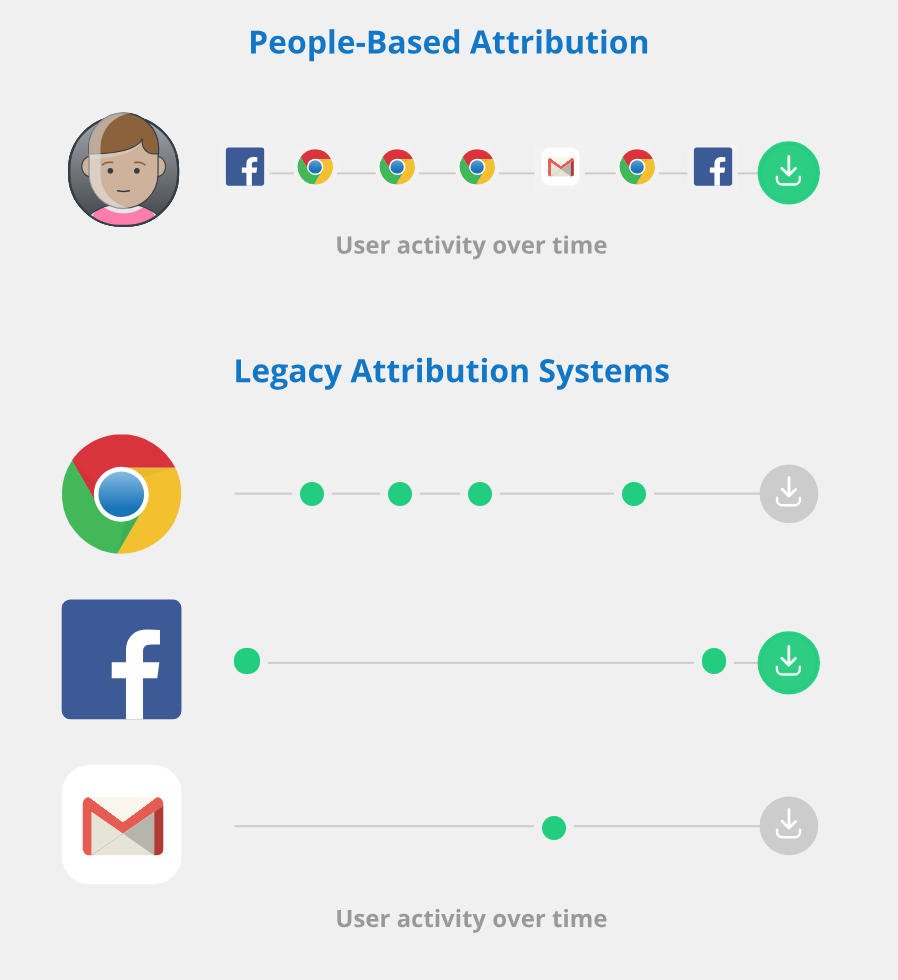
The result is complete, cross-platform visibility instead of siloed insights – allowing you to most-accurately measure app downloads from organic search and into your app via smart banners, enabling you to optimize your app user acquisition efforts.
Let’s imagine a real world example.
Say you just moved to a new city or town, and you’re looking to get to know your neighbors. You remember a friend mentioning Nextdoor, so you find their mobile website via Google search on iOS. You see a banner to download the app, click it, and open up the iOS App Store. Then, maybe you get distracted for a few days before you need a last-minute babysitter recommendation, remember Nextdoor, and search for the app directly in the App Store.. Finally, you download the app and begin networking with your neighbors.
With a legacy attribution provider, this install would be attributed to an organic App Store download – but a cross-platform attribution provider would rightfully recognize the role the banner ad played (via deep link measuring).
Out-of-the-Box Down-Funnel Analytics for Branch’s Journeys
Branch’s Journeys offers customizable smart banners with powerful audience targeting capabilities, personalized experiences to increase conversion rates, and sophisticated A/B testing to optimize campaign performance. Built on top of Branch’s renowned deep linking platform, Journeys also unlocks cross-platform insights marketers need to drive mobile growth.
For detailed steps on how to implement Journeys, visit Branch docs.
With Branch’s out-of-the-box analytics, you gain complete visibility into down-funnel events combined across platforms, conversion rates compared by channel, and long-term trends, broken down by campaign, device type, OS, and more.
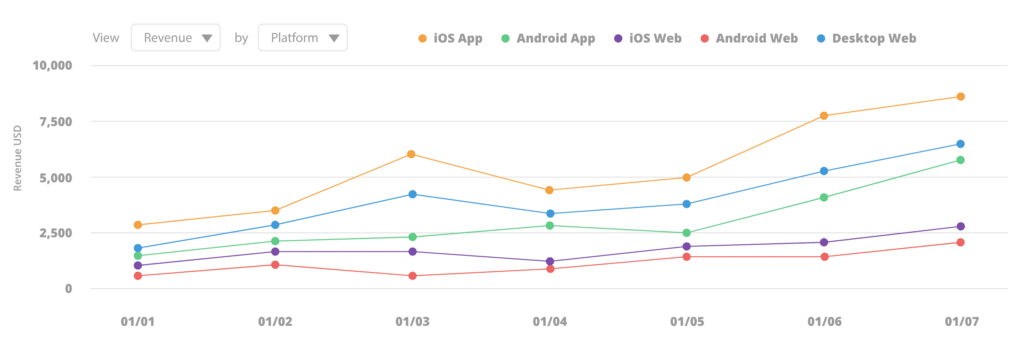
Navigate to the Journeys section of the Branch dashboard to answer important questions like which smart banners are generating the most app downloads, where those website visitors are coming from, what device/OS is converting best, how much revenue those new app users are generating, and more. These down-funnel insights allow you to make quick budget decisions to focus your user acquisition efforts on the campaigns and channels that generate the most ROI.
Ready to start converting mobile web visitors into high-value app users? Learn more about Branch’s Journeys solution or contact our sales team today.






















